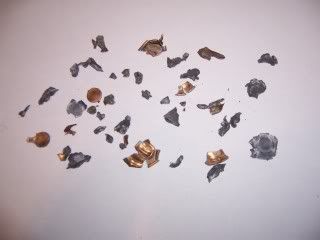Come and take it.
New member
I shot a small predator recently with a mini-14 using ball ammo. After several hits it still reacted like it was never shot and ran some distance before I anchored it with a critical hit in the nervous system.
How much tissue is required before one can benefit from the infamous tumble and break up.
Also why doesnt hydrostatic shock take place on same target? Does hydrostatic shock also have to rely on bullet expansion or breakup?
How much tissue is required before one can benefit from the infamous tumble and break up.
Also why doesnt hydrostatic shock take place on same target? Does hydrostatic shock also have to rely on bullet expansion or breakup?

